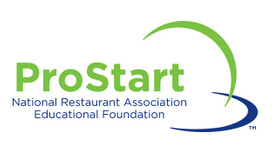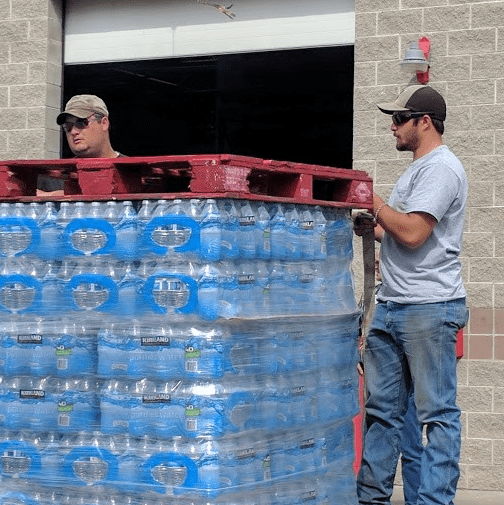In an effort to give back to the community, Big Sky Resort and its partners are boosting educational opportunities at this year’s 4th Annual Vine & Dine wine and food festival by offering an entry-level Sommeliers class and inviting high school students interested in the hospitality industry to learn from the best in the business.
Eight Montana high school students from across the state will learn side-by-side with local and special-guest chefs. These students are members of ProStart, a collaboration between schools and the foodservice industry to provide real-world skills in culinary arts and restaurant management.

Vine & Dine, which is Aug. 17 – 20, will feature Google’s culinary team, American Chef and TV Personality John Besh, Big Sky Resort’s culinary team and Buck’s T4’s Food and Beverage Director Chuck Schommer. These chefs and their sous chefs will pair up with a student and give them a collaborative look at what it takes to execute a major culinary and wine event.
“I am thrilled to work with ProStart’s Montana students at this year’s Vine & Dine,” said Google’s Global Program Chef Scott Giambastiani. “As chefs and hospitality leaders, it’s not only our obligation to mentor tomorrow’s talent, but it’s one of the most rewarding parts of the job. The responsibility we have as leading professionals to inspire and engage tomorrow’s talent is huge.”
Twelve Montana high schools participate in the Montana ProStart program. The students selected to participate at Vine & Dine include Bozeman High School’s Erika Carrol, Mackenzie Pistor, Hunter Bermeister; Whitefish High School’s Kyiah Ingraham, Alysha Wigner, Baileigh Krause, Robert Bertelsen; and Drummond High School’s Kolter Clute.
“Having worked with ProStart for the last 8 years, it is always exciting to host these young future culinarians in my kitchen,” said Todd Christensen, Big Sky Resort executive chef. “This year is very exciting to have not only the Big Sky Chefs working with ProStart but also them having the opportunity to work with Chef Scott Giambastiani and his Google team of chefs.”
The goal is to inspire and excite the students about working in the hospitality industry by giving them a real-world, behind-the-scenes look.
“Growing up in the hospitality industry, I have always had chefs and mentors that I looked up to,” said Chuck Schommer, Buck’s T4 Food and Beverage Director. “Now as a chef and restaurateur, ProStart is the natural fit to give back to an industry that has taken such good care of me. I am honored to be part of the Vine and Dine and bringing 8 Montana students to Big Sky Resort for this weekend event.”
The students will take part in the festival’s grand opening, “Back to our Roots: The Power of Plants,” on Thursday evening on Big Sky Resort’s Summit Hotel Terrace. On Friday evening, there is a ProStart fundraising dinner at Buck’s T4.
Montana ProStart is under the national ProStart umbrella, which is a program developed by the National Restaurant Association Education Foundation in conjunction with the industry. ProStart reaches nearly 140,000 students annually in all 50 states.
“It’s ProStart’s unique approach of partnering industry with education that is the programs’ foundation and strength,” said Brad Griffin, executive director of the Montana Restaurant Association, “and this joint venture with the Google Global Program chefs and ProStart is a perfect example.”
In addition, Vine & Dine is also offering an introductory Sommeliers class for professionals working in the hospitality industry in Montana. Master Sommeliers will teach this two-day intensive course, which begins Wednesday, Aug. 16. The introductory course is a prerequisite for the Certified Sommeliers Examination. Registrants will learn about wine and spirits, proper wine service and deductive tasting.
To register for the introductory Sommeliers class, or for tickets and information about the wine and food festival, please visit bigskyresort.com/vine.









News Comments
Thank you
Open Auditions for Annie
Monday, Sep. 16, 2024
I’m at the Bozeman airport where your painting, “Blowing East” is displayed. It’s absolutely gorgeous! Bravo, Marci!!
The Artists’ Gallery in Bozeman’s Emerson Cultural Center May Exhibits
Sunday, Jun. 30, 2024
This is so typical of a sign in, which we should not have to do to check if we or some one in our party got a permit. I have been working or "creating an account" for 30 minutes and just get the same ...
Smith River permit drawing results available
Sunday, Mar. 10, 2024
I have struggled with this podcast and my own participation therein, the event itself obviously traumatic, but beyond that my inability to reach anyone and convey anything resembling truth. The person ...
Billings, MT Case Becomes True Crime Podcast | 'An Absurd Result'
Marktokarski
Saturday, Jan. 20, 2024